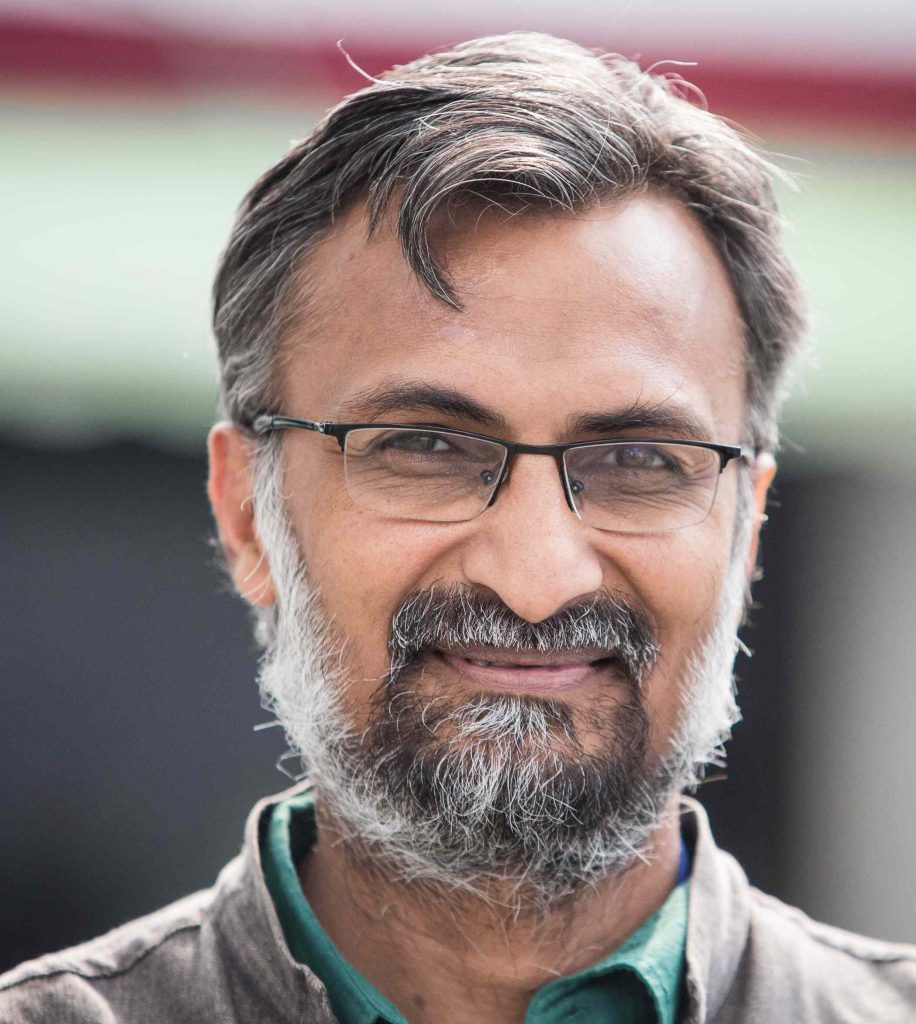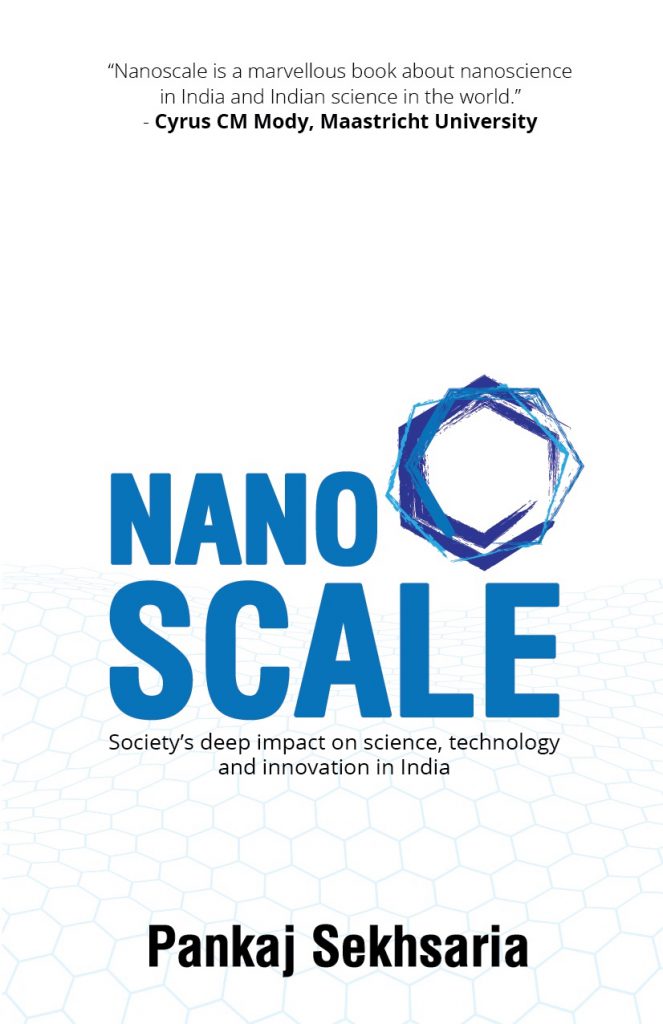Pankaj Sekhsaria is an associate professor at the Centre for Technology Alternatives for Rural Areas at IIT Bombay. In October 2020, he gave a talk based on his book Nanoscale: Society’s Deep Impact on Science, Technology and Innovation in India as part of Paraspar, a lecture series organised by the Office of Communications at IISc. The following essay is an edited excerpt from his book.

I first met Dr M Javed Ali, an eye cancer specialist at Hyderabad’s famed LV Prasad Eye Institute (LVPEI), in August 2010. It was early in my PhD research project as part of which I was studying scientists and their research work in Indian nanoscience and technology (NS&T) laboratories with the explicit aim to understand what the idea of innovation meant to them. I had managed access to LVPEI and to Ali through a common friend and had come to discuss one particular project he and his team were working on then. This was their attempt to use nanotechnology to help in drug delivery for the treatment of retinoblastoma, a cancer of the eye that affects young children.
Many things he told me that day were interesting and insightful, just as they were in the interviews with other scientists that I conducted in over half a dozen labs across the country as part of my research. It is this first interview with Ali, however, that remains deeply etched in my mind as it went straight to the heart of the challenges on hand, and was central to the story that would eventually emerge. Nano[technology] in the case of retinoblastoma, Ali noted, could help prevent removal of the child’s eye, because after a point the only option to save the child was to remove the eye with the malignancy. Vision would be lost, he explained, but the eye itself would be saved.
“Nano would alter the rate of removal of the eyes, because after some time when it is not responding, the only option is to remove the eye (…) With nano, those eyes [can be] saved. It has a big implication even if vision is not there. It has tremendous social implications because in this country, if a girl child has an eye removed, (…) she cannot marry anybody who has two eyes, or two hands, or two legs. For a girl child, to remove the eye which we do (…) quite often in such situations, has enormous social implications – for her own life, her trauma of facing society and the trauma of her knowing that her parents cannot face this society.”
This was a clinician involved in a nanotechnology-related research project in the laboratory, the ‘clinician-scientist’, and yet, as he spoke (and as the quote reveals), he sounded very much the social worker, even a social activist, dealing with the complex Indian reality of the girl child and of gender discrimination. It was almost as if he was seeking to change a social reality and not just the fate of one unfortunate individual.
Ali gave me a number of examples during this and subsequent interactions where he had seen religious beliefs, medical malpractices, poverty of families and many such factors becoming impediments in the treatment of retinoblastoma in both boys and girls. What stood out, of course, was how the girl child was discriminated against. In a bad scenario, as he pointed out, the eye infected with retinoblastoma would be removed completely. The child would be left one-eyed, but there would be no more threat to her life. This, Ali told me, parents would not allow in many cases and especially if the child was a girl. They could not have a one-eyed girl because no one would marry her when she was of marriageable age. They would rather let her die.
The details of what Ali told me were heart-rending at best and grotesque at worst. I myself had a little boy who was only a few months old then and it took only a moment for the mind to swap places, to realise that I could well have been sitting in Ali’s clinic in a completely different capacity. What an ordeal that would have been.
I was struck immediately by both – the content of what Ali was saying as also the intensity of his emotion. Together, they took me quickly into a completely unexpected domain – a valuable lesson that clinical practice, scientific research and innovation do not happen just in clinics and laboratories; that their footprints are much larger, their complexities far more subtle and multi-layered.
It was an early reminder that an intervention, even if directed explicitly at a particular point, has other manifestations and implications. It suggested, as a corollary, that chances of success would be greater if those innovating and intervening were aware of and engaged with the many-layered realities of the situation. If the parents refused to bring the girl child for treatment, what was the use of a technology and a cure that a clinic or a lab might have to offer? Was the clinician dealing with a malignant eye or with a complex social and historical reality? How could one be separated from the other? The problem, it seemed, was as much social as it was technical; the solution lay as much in the clinic as it did in the laboratory and in the domains of law, culture, society and politics. Innovation, Ali was telling me through the experience and the intimacy of his own practice, has to be multi-nodal, multi-layered and multiscalar; indeed, multi-many things!
It was not an insight I understood immediately, but it was something I kept going back to during the entire course of my research project. I saw repeatedly, albeit in differing ways, the deep influence of the cultural, social and political contexts of the labs on the scientific research, technological choices and innovation practices within the labs. The dominant current day narrative of innovation as patenting, commercialising and producing useful and monetisable technology stood challenged, even exposed. As I navigated through the spaces that create new scientific knowledge and the raw material for new technology, a huge mismatch was visible between policy formulations and visions of science and technology (S&T) on the one hand and the reality of the scientific institutions and the labs these policies were supposed to be about, on the other. The two appeared almost as if they led parallel lives on two different planets. The labs emerged, to use a more academic phrase, as hugely ‘encultured’ spaces that bore significant imprints of the society in which they were located. Indeed, the impact of the severely marginalised girl child’s reality went far beyond finding a cure for retinoblastoma in Ali’s case. This was a scheme of mutual influence and iteration that I saw repeating itself in unique and often unexpected ways in all the labs I researched.

I saw innovation happening in the laboratory at different levels depending on the specific mandates and intentions of the research. Some research is indeed remote from the immediate needs and concerns of the society within which it is located. There is other research in the lab that is specifically mandated towards intervention in society. In both situations, I found convincing evidence that what happens outside significantly influences what happens inside. In the latter case, however, there is an additional demand and an added layer of complexity: it is not enough merely to innovate inside the laboratory – culture and society need to be simultaneously engaged with and innovated if the desired outcomes are to be achieved.
During my research project I studied a total of five nanoscience and nanotechnology labs in the cities of Hyderabad, Pune and Chennai. What I learnt was that the publicly visible and dominant discourse around S&T – funding, publications, citations, patents, even new technology possibilities – were all only one dimension of that world. It is, one could argue, a numericalised, cleaned-up, objective account, which is actually quite distant from the micro-realities and day-to-day challenges of what happens inside the places where S&T research and innovation actually happens.
The specific reference here is to the laboratory. In one, taken-for-granted way, the laboratory is an integral part of our lives, certainly of the imagination of the modern world. Yet, we know so little of what happens inside. We know little of this world beyond funding allocations that the government makes, patents issued that we barely understand, scientific papers that we hardly ever read, technologies that promise huge windfalls, or awards for scientific breakthroughs that the media occasionally tells us about. We know almost nothing of the nuts and bolts of doing science inside these laboratories.
Together, they took me quickly into a completely unexpected domain – a valuable lesson that clinical practice, scientific research and innovation do not happen just in clinics and laboratories; that their footprints are much larger, their complexities far more subtle and multi-layered
What would happen then if we were to enter the laboratories and the institutions where this S&T happens, where the money the government makes available has been used or should have been spent, where the NS&T is being researched and developed and where an important part of the innovation process is located?
Who are these scientists who do all this research? Where do they come from and where do they intend to go? What are they thinking? What are they actually doing? What are the pressures and pulls that they face? What influences them? What do they seek their influence to be?
The laboratory is indeed the one blackbox in plain sight that we have passed by completely. Access is not easy, but what would happen if we managed somehow to get that access? What would we see? What would we be shown? What would we hear, smell and taste? How would life inside the laboratory be revealed to us? What, in turn, would the laboratory reveal to us about life inside S&T and indeed, of the world outside of it?
I can’t make a claim on the specifics of what will emerge, but a decade now of entering these spaces and processes of science, and looking at them with tools and lenses that are sociological, historical and ethnographic has convinced me of one thing. What will emerge will surprise us. It will be challenging and counter-intuitive. It will be interesting and deeply, deeply insightful. Quite likely, also, the worlds of science and technology and the worlds within which this science and technology happens will not look anymore like what they have seemed like till now.




